Clematis Tangut: varieties, planting and care
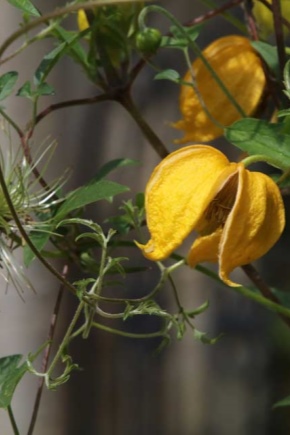
Clematis Tangut is a perennial vine, distinguished by excellent decorative properties and undemanding to the conditions of detention. The plant is well acclimatized and suitable for growing in the conditions of central Russia. The natural variety does not have long climbing branches. But the description of the popular varieties "Love Radar" and "Anita", as well as many others, proves that cultivated subspecies can still develop rather long curly shoots.
Clematis Tangut is quite popular in landscape design - it is suitable for use as a curb plant, can form low fences, and tolerates weather changes well. But it is not enough to choose the type of vine, you also need to study its features. Before decorating your site with clematis Tangut, it is worth studying in more detail when it is better to plant, what care is needed after it, how is growing from seeds, and are there other methods of reproduction.
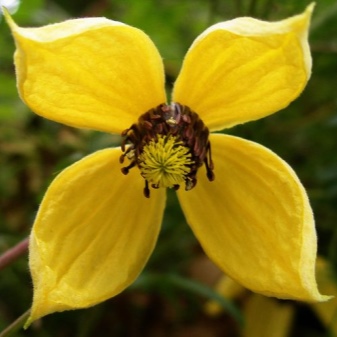
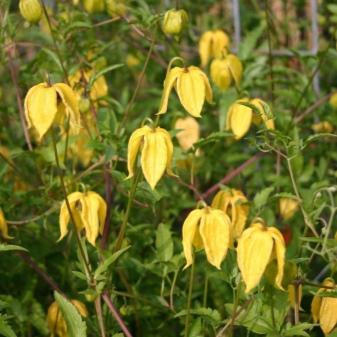
Description
Tangutica or clematis Tangut is a plant characteristic of Central Asia. It is found in China and Mongolia, grows in nature on rocky soil, mountain slopes, pebbles in river valleys. Clematis Tangut looks more modest in unfavorable growing conditions. But in cultural cultivation, its flowering and branching occurs much more luxuriant and abundant, which attracts the attention of amateur gardeners and landscape design professionals.
Liana Clematis tangutica has woody shoots, the length of which reaches 3 m. The stems have a pronounced angularity, they are distinguished by a reddish tint. Young shoots are pubescent, adults are naked, as lignification can take a straight form. The leaves are pinnate, smooth, rather long - up to 3-8 cm, may have a serrated or clearly divided edge into several lobes.
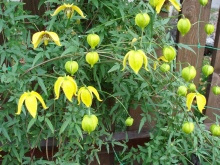
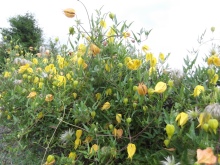
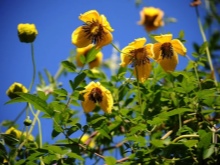
Tangut clematis blooms in the summer (June-July), can be repeated in September, after fruiting. During this period, the plant looks especially decorative. This type of clematis blooms profusely, with a single development of buds. Initially, the inflorescences of a beige, light yellow or golden hue are bell-shaped, then fully open, leaving many pistils and stamens in the center.
The decorative properties of the plant are also manifested in its ability to braid vertical supports. - walls of buildings, fences, specially created frames and gratings. Flowers appear only on young shoots. Therefore, when pruning in the fall, all the stems are removed, only the base of the bush with a palm height remains.
This greatly facilitates wintering, allows you to simply cover the plant with a rather thick layer of humus.
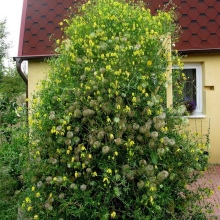
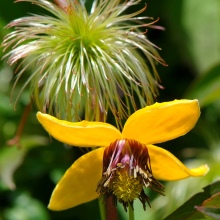
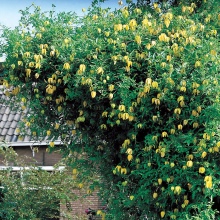
Varieties
Among the varieties of Tangut clematis found in cultural breeding, you can find many interesting selection samples. Let's consider the most popular ones.
- "Radar of love". Traditional liana with yellow flowers shaped like lanterns. The variety is especially loved by fans of gazebos on the site, well suited for growing on the balcony of a country house.
- "The Last Dance". A variety with an unusual, yellow-orange color of the petals. Quite large and attractive.
- Anita. The most common variety of Tangut clematis with an uncharacteristic snow-white shade of inflorescences. The length of the vine also goes beyond the usual standard, it can reach 4-5 m.The plant is best planted outdoors with a support in the form of a lattice.
- Bill MacKenzie. Fast growing variety with increased vines length. Scourges can grow up to 6 m. The variety is characterized by the formation of yellow buds, which do not fully open during flowering.
- Lambton Park. Tangutika of this variety has a length of lianas up to 4 m, differs in large - up to 5 cm in diameter - inflorescences. The plant is the least demanding on lighting, can be planted on shaded areas of land, along the walls of buildings and fences. The color of the buds is rich yellow, canary.
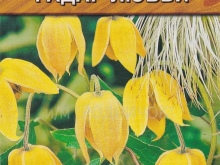
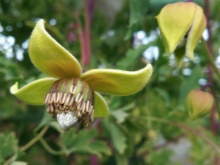
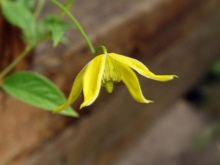
How to plant?
In order for the planting of Tangut clematis not to become a serious problem, it is worthwhile to carefully study all the features of the process in advance. An adult plant, rather than young seedlings, tolerates movement more easily. But this does not mean that the seedling will root well in any part of the summer cottage or local area. It is worth purchasing a plant in proven nurseries, otherwise there is a great risk of encountering diseases or pests that can quickly spread throughout the garden.
Only clematis with a developed root system are suitable for planting - it has at least two root processes and a length of 10-15 cm. The surface of the bark should be clean, without cracks and neoplasms. Seedlings in containers or bags are ready for planting throughout the year. Tangutika with open roots should be planted in the spring, and it should not be kept outdoors for a long time due to the risk of drying out and death of the plant.
For planting creepers, a well-lit area is selected, but with partial shade, which allows to protect the plant from the scorching sun in the hottest hours. You should not choose places where the wind moves openly, as well as lowlands with a close location of groundwater.
The ideal option is a small hill in the shade of the crown of a tall tree. Before planting a seedling, the soil must be thoroughly drained and fertilized, loosened. Tangut clematis feels best on lands with slightly alkaline indicators, in loams.

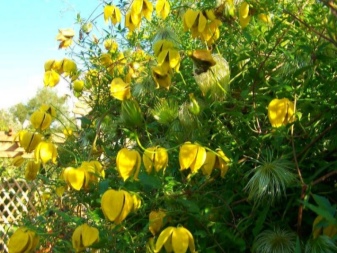
Preparation for planting takes place in a specific order.
- Creation of a landing pit. It should be from 60 cm wide and have the same depth. In an adult plant, the root system grows strongly. It is better to retreat from neighboring plantings by at least 1.5 m. Drainage is laid in the pit, and on top is a mixture of two parts of compost, one each of sand, earth and peat, you can add lime and ash.
- Support installation. If it is just a vertically positioned pole or frame structure, they are placed in the pit. And also the lattice or the side of the gazebo, the structure of the porch or pergola can act as a support.
- Having formed a small hill from the prepared soil mixture in the planting hole, you need to place a seedling on it, spread the roots of the plant. The root collar should be under the upper edge of the pit, 5-10 cm lower. Further, the depression is covered with earth to the beginning of the stem, while the level around the trunk will be below the main soil layer.
- Abundant watering of the seedling is carried out. Fertilizers can be dissolved in water.
- The formed trunk circle is mulched. Peat or coniferous sawdust will do. They fill the surface with a layer of 4-5 cm.
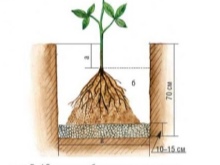
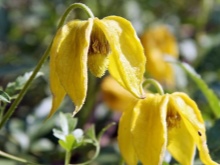
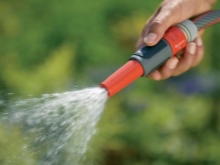
When planting in spring, by the fall, the plant will have time to take root and grow. Summer and fall seedlings can die from heat or early frost.
How to take care of it properly?
The cultivation of Tangut clematis is associated with the need to provide care for the plant. He needs regular watering - weekly after planting and every 2-3 days in the heat. The longer the creeper shoots, the more water it needs. The volumes of moisture introduced at a time vary from 10 to 40 liters. So that the water does not stagnate, after watering, the soil in the near-trunk circle is carefully loosened, weeded, and fresh mulch is added as needed.
During the growing season, the liana requires additional feeding from 2 years old, after the seedlings have taken root.With the formation of buds, nitrogen-based fertilizers are applied under the root. With the beginning of bud formation, potash compounds prevail among the additives. After the end of flowering, a phosphorus-based top dressing is recommended, which helps the liana to properly prepare for winter.
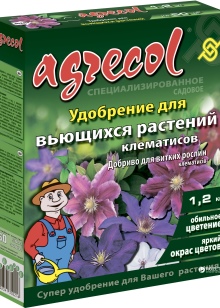
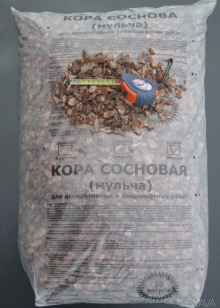

Clematis of this species necessarily requires pruning for sanitary purposes to remove dried and dead lashes affected by fungus or parasites of branches and seasonal. Since the tanguica belongs to the 3rd pruning group, its shoots of the past year must be completely removed - this will allow with the onset of the new season to ensure abundant bud formation. All work is done before sending the plant for wintering or at the beginning of spring. If you plan to form a lush bush at the bottom, you can leave 3-4 buds. So the vines will have support, and the plant itself will acquire more greenery.
It is not necessary to intensively cover clematis for the winter. After sanitary pruning, it will be enough to abundantly cover the rest of the bush with earth and humus. If lower shoots with buds are left, the trunk is buried in the ground or peat more intensively to avoid freezing.
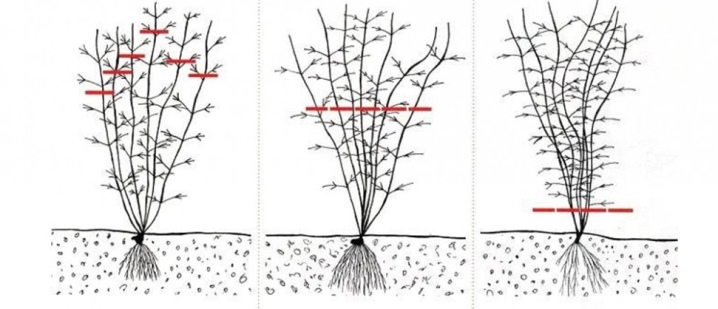
Reproduction methods
Tangutika is a plant with medium-sized inflorescences and a seed reproduction method is quite suitable for it. But you can also use the cuttings dug in in the spring, by the fall they will be ready to separate from the parent stem. Cutting involves the selection of strong shoots with 3-4 nodes. The cut branches are soaked in a growth stimulator for 3 hours, then placed in a mixture of soil, sand and peat, left under a film. It is possible to grow in a box for seedlings in an ordinary greenhouse, keeping the temperature from +25 degrees Celsius.
When using seeds, the planting material is selected after they have fully ripened in the second half of September. Ready-made seeds of the desired variety can be purchased in retail chains. For such planting material, stratification is recommended - cold hardening - for 90-105 days. The seeds, placed in a moist peat substrate, are placed in the vegetable box of the refrigeration unit.

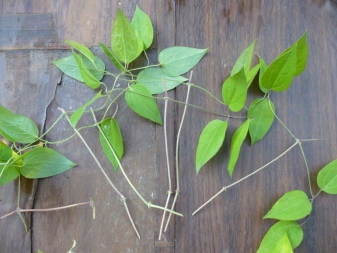
Sowing of stratified raw materials is carried out in the middle of spring. 10 days before being placed in the ground, the seeds are soaked, stored at room temperature, the water is changed every 2 days. At this time, a soil mixture is prepared in containers with drainage holes - fertile soil, peat and sand are combined in equal quantities. The substrate should be quite warm and loose; before planting the seeds, it is watered abundantly with water. Sand is sprinkled on top, the container is covered with glass.
During the germination period, it is important to maintain the ambient temperature at + 25 ... 30 degrees Celsius. Moistening the soil before emergence is carried out through the pallet. When the third leaf appears at the seedlings, they are dived, seated in separate containers.
Transplanting into the ground will be possible only after the complete cessation of night frosts. Young seedlings in the first year winter with shelter without pruning, in the spring they are transplanted to a permanent place.
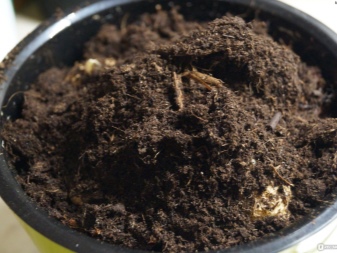
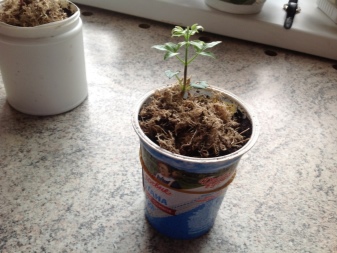
Diseases and pests
Clematis Tangut is quite resistant to diseases and pests, but it is not protected from attacks of parasites and fungal infections. If specific growths appear on the bush, swelling, most likely, the cause of the problem is root-knot nematode... Treatment is rarely effective here. For sanitary purposes, it is recommended to dig up and completely destroy the bush in a fire.
And also this type of clematis often attacks aphid... To combat it, a harmless infusion of tobacco leaves is used. If signs of powdery mildew, gray rot, rust appear on the branches and leaves of the plant, you can also fight with the help of folk methods. Good results are obtained with a soapy solution. But it is much safer to use chemicals based on "Fundazol" or its analogues.
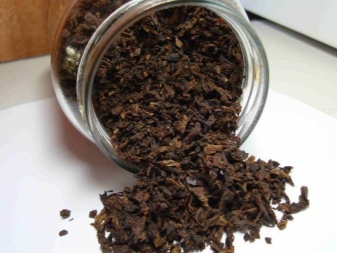
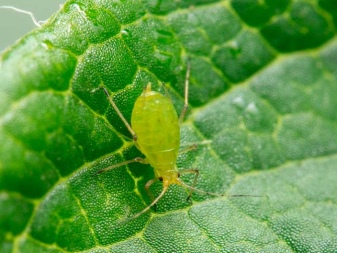
Use in landscape design
When planning to decorate your garden with Tangut clematis, you should pay attention to the variety of ways to use it in landscape design. So, the shortest options are well suited for framing garden paths. In this case, it is worth choosing varieties that tend to form more bushes, rather than vines, and do not cut them too short for the winter.
Tangutica is very popular in landscaping verandas and balconies. Without the use of supports, the plants in the containers frame nicely with railings and fences, and the shoot length can be easily adjusted by pruning throughout the season. The most climbing varieties are good for decorating terraces and gazebos. They grow rapidly, and by the summer the structure will be completely entwined with bright greenery creeping along the supports, strewn with decorative yellow flowers.

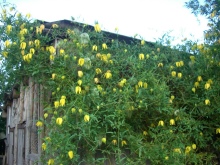
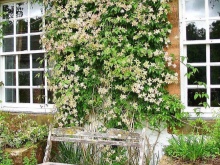
For an overview of clematis tangut, see the video.







































































































The comment was sent successfully.